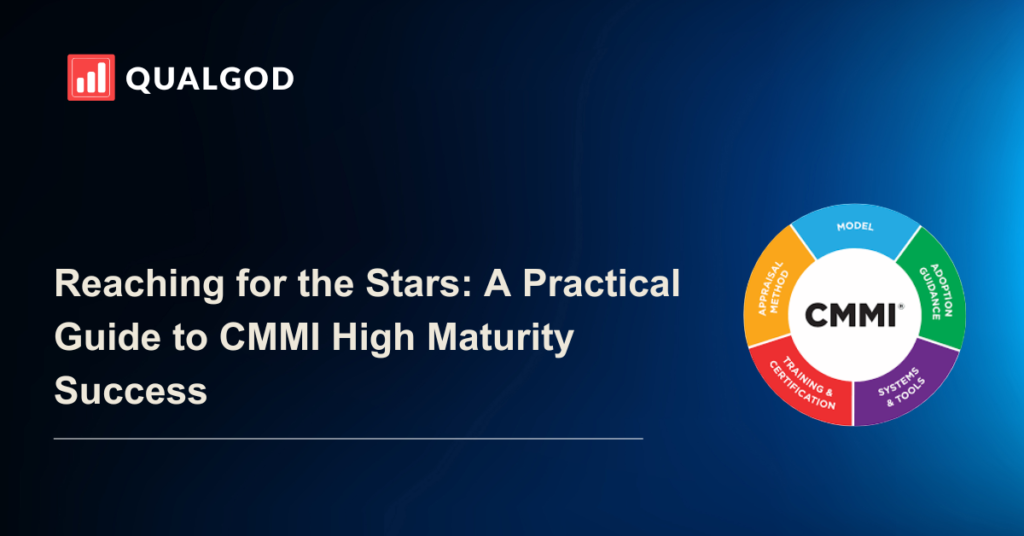
Reaching high maturity in CMMI isn’t just about getting a certificate — it’s about building a company that runs smoothly, adapts quickly, and delivers consistently great results.
If you’re aiming for CMMI Level 4 or 5, this guide will help you understand what that really means, how to get there, and what you can expect along the way.
Let’s break it down step by step.
🚀 What Is “High Maturity” in CMMI?
CMMI has five levels. Levels 4 and 5 are considered high maturity. This means your organization:
- Uses data to guide decisions
- Can predict performance and improve it proactively
- Has built a culture of continuous improvement
It’s not just about following processes — it’s about making those processes work smarter.
🧩 What Makes High Maturity Different?
At lower levels (1–3), you focus on building processes and getting teams to follow them.
At high maturity (4–5), the focus shifts to:
- Measuring performance accurately
- Managing variation and risk
- Using data to constantly improve
You’re not just reacting anymore — you’re planning ahead with confidence.
📊 Why It Matters
High maturity gives you real business advantages:
- Fewer errors
- Better quality
- Faster delivery
- More customer trust
You become more efficient, more predictable, and more respected in your industry.
🧭 How to Reach High Maturity (Step-by-Step)
✅ Step 1: Get Strong at Level 3 First
Don’t rush. You need solid processes that are well-defined, followed, and consistently applied. If you skip this, everything else will fall apart.
Strong foundations matter more than speed.
✅ Step 2: Start Measuring Performance
You can’t improve what you don’t measure. Start collecting data on key areas like:
- Time to deliver
- Defect rates
- Rework
- Customer feedback
This data will be the engine behind your decision-making.
✅ Step 3: Analyze the Data
Once you have enough data, start looking at:
- Trends
- Patterns
- Root causes
The goal is to predict problems before they happen and solve them at the source.
✅ Step 4: Control and Manage Variation
High maturity companies don’t just accept ups and downs. They manage variation using statistical tools, so things stay predictable and stable.
You’re not guessing anymore — you’re working with facts.
✅ Step 5: Make Data-Driven Improvements
Now that you understand what’s going on, use those insights to make smart, targeted changes.
Don’t change everything — focus on what the data tells you will have the biggest impact.
This is how continuous improvement becomes real.
✅ Step 6: Strengthen the Culture
CMMI high maturity is as much about mindset as it is about methods.
Build a culture where teams are encouraged to:
- Use data
- Think long-term
- Try new ideas
- Learn from mistakes
That’s how you build a company that keeps growing.
🌟 What Level 4 and 5 Look Like
| CMMI Level | What You’re Doing |
| Level 4 – Quantitatively Managed | Using data to control processes, reduce variation, and make consistent decisions |
| Level 5 – Optimizing | Using data and innovation to improve, adapt, and lead in your field |
These are not just checkboxes — they’re signs of a business that leads with clarity.
🎯 Final Thoughts
Reaching high maturity isn’t easy — but it’s worth it. You get stronger systems, better results, happier customers, and a company that can handle change without falling apart.
Take it one step at a time, build the right habits, and let the results speak for themselves.
